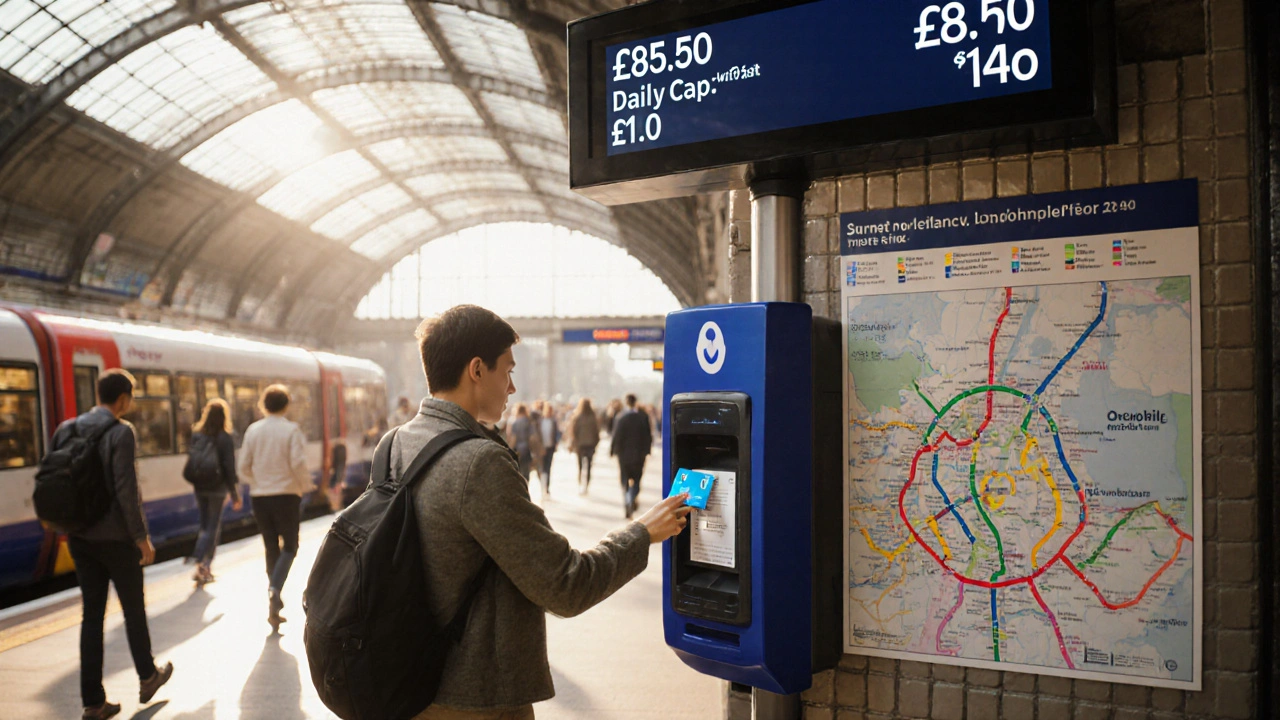Oyster Card Capping in London: How Daily and Weekly Caps Save You Money
Learn how Oyster card daily and weekly caps work in London to save money on public transport. No need for expensive tickets-just tap and go.
When you use an Oyster card cap, the daily or weekly maximum you pay for travel on London’s public transport, no matter how many journeys you make. Also known as fare cap, it means you never pay more than a set amount—even if you hop on five buses, two Tube lines, and a train in one day. This isn’t a discount you have to sign up for. It’s automatic. The system tracks your trips and stops charging you once you hit the limit.
The cap works differently depending on where you travel. If you only stick to Zones 1 and 2, your daily cap is lower than if you go out to Zone 4 or beyond. There’s also a separate cap for buses and trams—so if you only ride buses all day, you’ll hit that lower cap faster. And if you travel during off-peak hours, you might pay less per trip, but the cap still applies the same way. The key is that you don’t need to plan your route perfectly. Even if you end up taking the long way home, the system protects your wallet.
Weekly caps exist too, but most people don’t need them. If you’re in London for five days or more, the weekly cap kicks in automatically on Monday and resets every Sunday. It’s not something you have to think about—just tap in, tap out, and let the system do the math. Students, seniors, and people with disabilities get extra discounts, but the cap still applies to their reduced fares. And yes, contactless cards work the same way as Oyster cards. You don’t need to buy a physical card unless you want to.
What trips count? All Tube, DLR, London Overground, Elizabeth line, TfL Rail, buses, trams, and most National Rail services within London. But if you take a train outside the zones—say, to Brighton or Cambridge—that trip doesn’t count toward your cap. You’ll be charged extra, and it won’t be added to your daily total. Same with airport transfers like the Heathrow Express. Those are separate.
The cap changes every year, usually in January. In 2025, the peak-time cap for Zones 1–2 is £8.50. Outside peak hours, it’s just £7.20. Go beyond Zone 2? The cap jumps to £13.50. If you’re commuting daily from Zone 4, that’s still cheaper than buying individual tickets for every trip. And if you’re a student or work near a museum, you might hit the cap by lunchtime. That’s the whole point.
There’s no trick to it. No apps to download, no alerts to set. Just tap your card. The system remembers your trips. If you forget to tap out, you’ll be charged the maximum fare for that journey—but the cap still protects you for the rest of the day. So even if you get charged £9.20 for one missed tap, you won’t pay more than £13.50 total for all your other trips.
People who use the Tube every day don’t realize how much they’re saving until they check their balance. One commuter in Croydon told me he saved £120 a month just because of the cap. That’s not a small thing when rent in London eats up half your paycheck. And if you’re visiting for a week? You’ll pay less than £50 to get around the whole city—even if you’re hopping from Camden to Greenwich to the O2.
What you’ll find below are real guides on how to use your Oyster card smartly: where to top up, how to check your cap, what to do if you’re overcharged, and which travel zones give you the best value. You’ll also see how it connects to other parts of London life—like saving on museum entry with a Travelcard, or using your cap to justify that extra trip to a hidden pub in Hackney. It’s not just about getting from A to B. It’s about not getting ripped off while you’re doing it.

Learn how Oyster card daily and weekly caps work in London to save money on public transport. No need for expensive tickets-just tap and go.